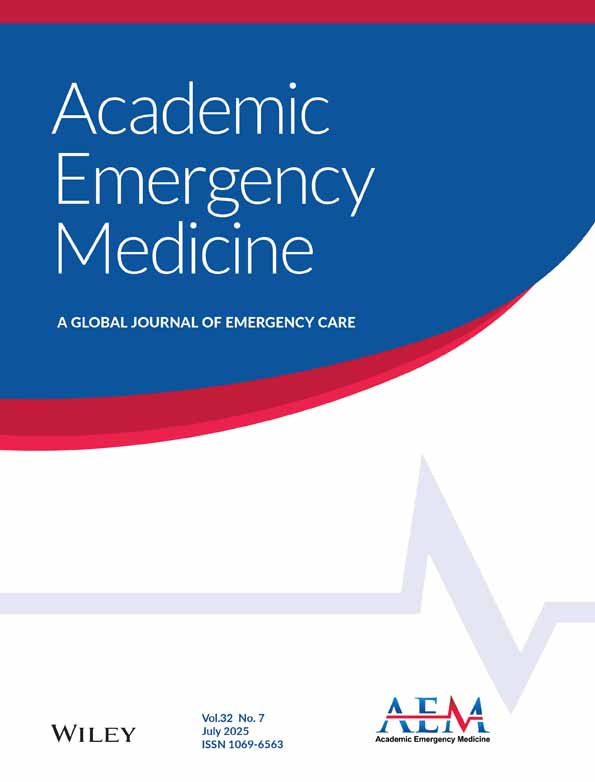Effect of blood alcohol on the diagnostic accuracy of glial fibrillary acidic protein and ubiquitin carboxy-terminal hydrolase L1 for traumatic intracranial hemorrhage: A TRACK-TBI study
The TRACK-TBI Investigators: Neeraj Badjatia, MD, University of Maryland; Ann-Christine Duhaime, MD, Mass General Hospital for Children; V Ramana Feeser, MD, Virginia Commonwealth University; Shankar Gopinath, MD, Baylor College of Medicine; Ramesh Grandhi, MD, MS, University of Utah; C. Dirk Keene, MD PhD, University of Washington; Christopher Madden, MD, UT Southwestern; Michael McCrea, PhD, Medical College of Wisconsin; Randall Merchant, PhD, Virginia Commonwealth University; Laura B. Ngwenya, MD, PhD, University of Cincinnati; Claudia Robertson, MD, Baylor College of Medicine; Richard B Rodgers, MD, Goodman Campbell Brain and Spine; Ross Zafonte, DO, Harvard Medical School.
Supervising Editor: Christopher R. Carpenter
See related articles on page 813 and 815.
Abstract
Background
Acute intoxication is common in patients evaluated for traumatic brain injury (TBI). However, the effect of elevated blood alcohol levels (BALs) on the diagnostic accuracy of FDA-cleared biomarkers for evaluating traumatic intracranial injury on computed tomography (CT) scan, namely, glial fibrillary acidic protein (GFAP) and ubiquitin carboxy-terminal hydrolase L1 (UCH-L1), has not been well studied.
Methods
We investigated the effect of significantly elevated (>300 mg/dL) and modestly elevated BAL (81–300 mg/dL) at emergency department presentation on the diagnostic accuracy of GFAP and UCH-L1 for predicting a positive CT in patients presenting to 18 U.S. Level I trauma centers within 24 h of TBI as part of the prospective, Transforming Research and Clinical Knowledge in TBI (TRACK-TBI) study. Plasma GFAP and UCH-L1 were measured using Abbott i-STAT Alinity and ARCHITECT assays. Discrimination was evaluated using the area under the receiver operating characteristic curve (AUC).
Results
Of 2320 TRACK-TBI participants studied, 54 (2.3%), 332 (14.3%), 1209 (52.1%), and 725 (31.3%) had significantly elevated BAL, modestly elevated BAL, nonelevated BAL (0-80 mg/dL), and no BAL available, respectively; 48.3% of the cohort had a positive brain CT. Those with significantly elevated and modestly elevated BAL were more likely to have positive CT (61.1% and 60.5% vs. 46.9% and 44.0%) and had higher plasma GFAP and UCH-L1 levels than those with nonelevated BAL and no BAL available. The AUC of GFAP and UCH-L1 combined for predicting CT positivity was higher in those with significantly elevated BAL (0.949) than those with modestly elevated BAL (0.858), nonelevated BAL (0.849), and no BAL available (0.883).
Conclusions
Modestly and significantly elevated BAL does not lower the diagnostic accuracy of GFAP and UCH-L1 for predicting traumatic intracranial injury on CT. These biomarkers may be useful in decreasing avoidable brain CT imaging in persons with acute alcohol intoxication.
CONFLICT OF INTEREST STATEMENT
RCG has an ongoing academic collaboration with GryphonBio Inc, and was previously a paid consultant for BrainBox Inc. KKWW is a shareholder of Gryphon Bio. Inc. RD-A is an advisor for BrainBox Solutions, Inc., and holds stock options in the company. He has served as a consultant for Abbott, Danaher, and MesoScale Diagnostics, LLC and has received research support and consulting fees from those firms. FKK has received research funding and assay reagents from Abbott Laboratories.
Open Research
DATA AVAILABILITY STATEMENT
Study data will be made available upon reasonable request.




